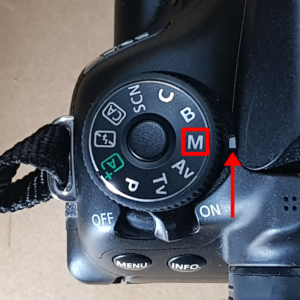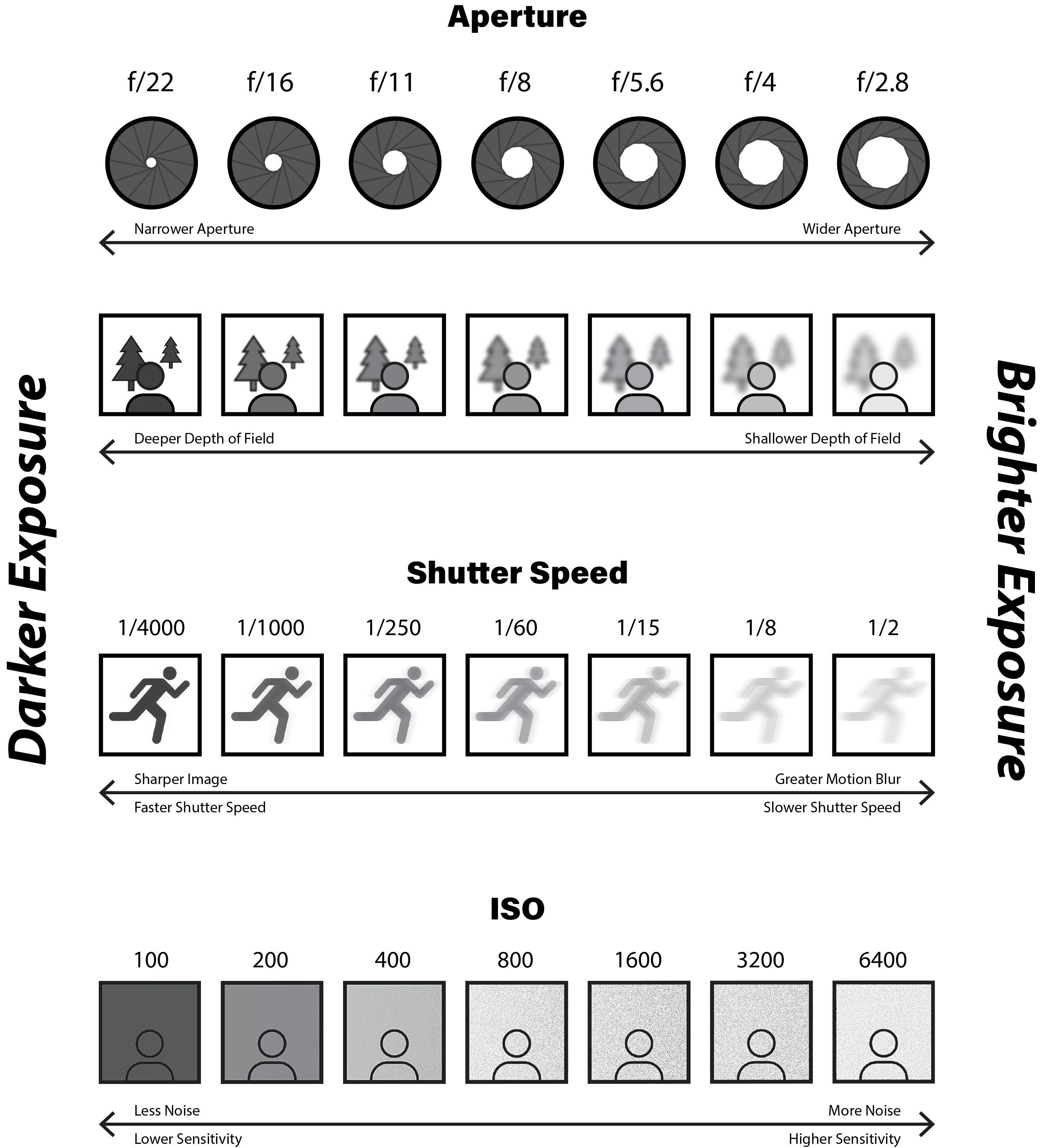Photography Guide - Tutorial 1
Using a DSLR camera
Difficulty: Medium
What you will learn: Manual mode, understanding components of exposure
Manual Mode
On the left side of the top of the camera, there is a wheel with symbols and letters.
Rotate the wheel to align the M to the marker to set the camera to Manual Mode.

Components of Exposure
Aperture, shutter speed and ISO are three elements that determine the exposure of the photo you capture. All three elements need to be balanced with each other to produce an appropriately exposed photo. Each component of exposure has its own trade-off depending on what they are set to.
Aperture
Aperture is an opening within the lens that allows light to enter and hit the imaging sensor. The aperture can widen or narrow to allow more or less light to hit the sensor.
A lower aperture increases the size of the opening, thus allowing more light to enter and hit the sensor. This increases the exposure of the photo. A wider aperture will have a shallower depth of field (the subject is in focus while the background is out of focus).
A higher aperture decreases the size of the opening, thus allowing less light to enter and hit the sensor. This decreases the exposure of the photo. A narrower aperture will have a deeper depth of field (both the subject and background is in focus).
The choice of aperture is dependent on the desired effects. Photographers typically use a lower aperture when doing portrait photography as the shallower depth of field draws focus towards their subject. Meanwhile, photographers usually use a higher aperture when capturing landscapes as the foreground and background are in focus.
Shutter Speed
Shutter speed is the length of time the shutter opens and closes. Shutter speed is represented in fractions of a second.
A slower shutter speed allows the shutter to open for a longer period of time and allows more light to hit the imaging sensor; this increases the exposure of the photo. However, a slower shutter speed can increase motion blur or blurriness in the photo as the camera captures camera shake or movement by the subject.
A faster shutter speed allows the shutter to open for a shorter period of time and allows less light to hit the imaging sensor; this decreases the exposure of the photo. A faster shutter speed will create a sharper image as the shutter is open for a shorter period of time and is less susceptible to capturing unwanted movement. However, as a faster shutter speed decreases the exposure of the photo, the subject should be lit more brightly to compensate.
The choice of shutter speed is dependent on the desired effect. A slower shutter speed would be desirable when light painting to create a blurred effect. Meanwhile, a faster shutter speed would be desirable when photographing sports due to its freeze-frame effect when capturing fast movement.
ISO
ISO is the sensitivity of the image sensor within the camera.
A higher ISO will make the image sensor more sensitive to light which increases the exposure of the photo. However, as ISO increases, the photo will appear grainier as more noise is introduced into the photo.
A lower ISO will make the image sensor less sensitive to light which decreases the exposure of the photo. The lower the ISO, the less noise (grain) there will be in the photo.
Exposure Cheat Sheet

Illustration created by Nathaniel Lowe (2021)